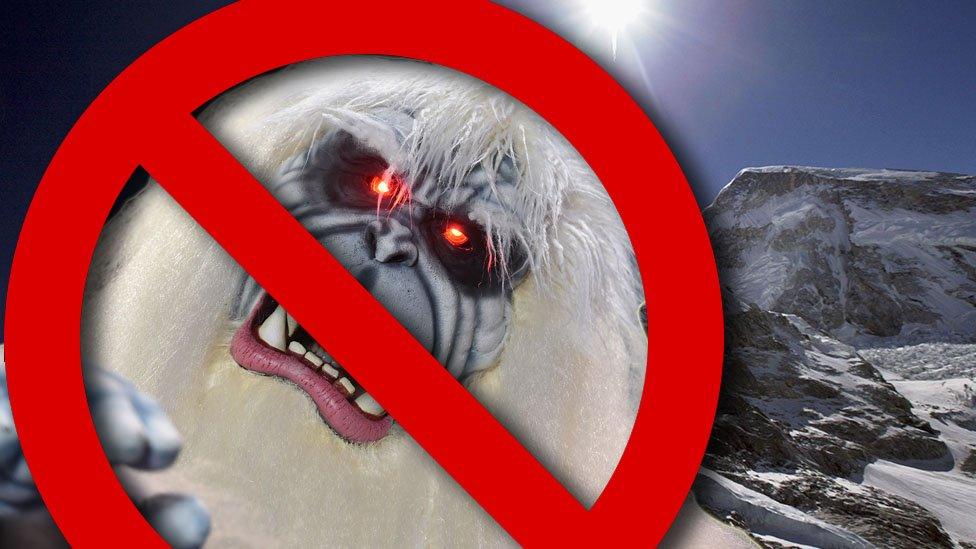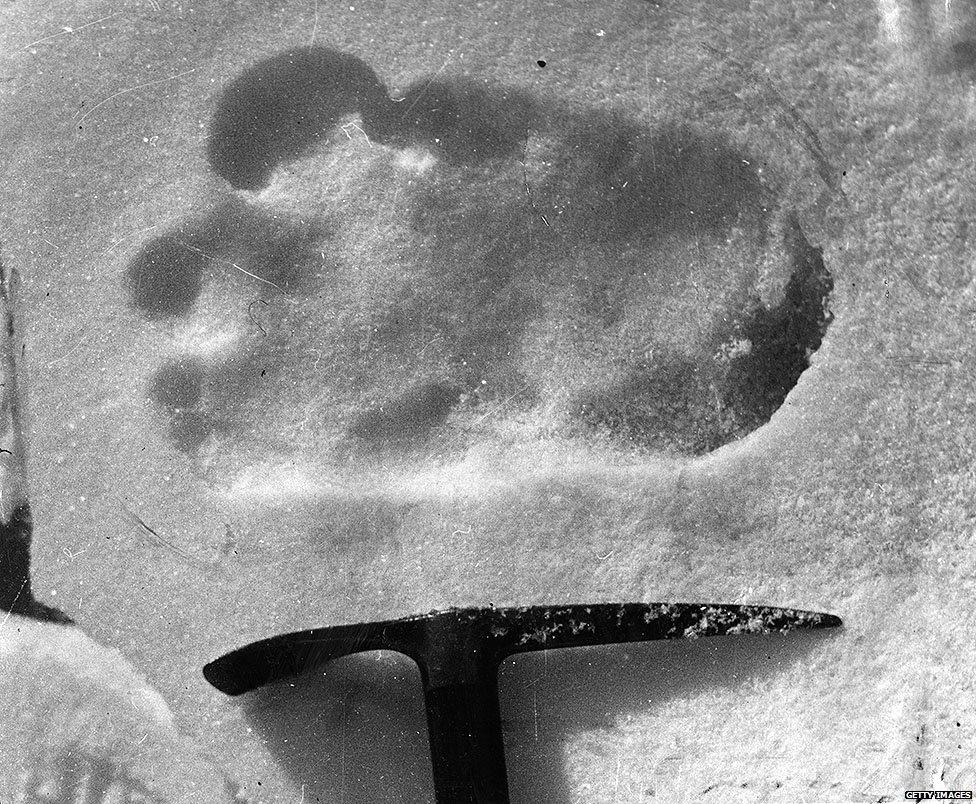It's official: Scientists conclude there is no such thing as the Yeti
- Published

Scientists believe they have proven, once and for all, that the Yeti doesn't exist.
So if you were planning a trip to Nepal to try to find the abominable snowman, you might want to rethink your holiday plans.
Many people thought a race of prehistoric apes lived in the snowy wilderness of the Himalayas in Asia.
But a new study has concluded that all physical evidence suggests Yetis come from various types of bears.
Danish professor Dr Charlotte Lindqvist is the expert responsible for putting an end to a centuries-old myth that has been passed down by generations of people in Nepal.

Some people believe a rare ape lives undiscovered in the Himalayan mountains
"Our findings strongly suggest that the biological underpinnings of the Yeti legend can be found in local bears," says Charlotte, who works at New York's University of Buffalo.
Charlotte and her team looked at nine samples of historic Yeti evidence gathered by a crew making a film about the creature.

Experts say all evidence of Yeti life comes from various types of bear
But sadly (for the filmmakers) DNA tests proved they were looking at bits of old dead bears, casting more than a century of yeti sightings into serious doubt.
The Brits saw something monkeying around in the snow
The first official record of something out of the ordinary came in 1832 when the Journal of the Asiatic Society of Bengal published a report from British trekker B. H. Hodgson.
He said he saw a creature covered in long, dark hair which he thought was an orangutan.
If that was the case, the orangutan would have been more than 3,700 miles from his Sumatra home and probably cold and confused.

Explorers in the Himalayas reported Yeti sightings for more than 100 years
Later, the Germans took an interest
In 1925, photographer N. A. Tombazi recorded his experience with a Yeti, spotting a tall, naked figure tugging at rhododendron bushes at 15,000 feet (4,500m).
Shortly before the start World War Two, the Nazis took an interest in the Yeti, sending an expedition to Nepal to investigate.
But even then, more than 100 years ago, explorer Ernst Schäfer concluded the Yeti was just a bear.

This photo was taken in 1951 by Eric Shipton and sparked international interest in the Yeti
The Daily Mail even got involved
The national newspaper sent an expedition to Nepal in 1953.
They printed an article a year later about finding a Yeti scalp, but when an expert looked into their report, Professor Frederic Wood Jones concluded it was neither a scalp nor from an ape.

Reinhold Messner says he met a Yeti but it was just a rare bear (which he killed)
Bear theories have been popular since the 80s
In 1986, Italian mountaineer Reinhold Messner claimed that the mysterious creature was a species of endangered bear - either the Himalayan brown or the Tibetan blue - which can walk around on their back legs.
He says he killed a "Yeti" during an encounter in Nepal, which means one of these species became even more endangered after bumping into Reinhold.
National Geographic reported on Yeti life as recently as 2013., external
Warning: Third part video may contain adverts
More recent expeditions also revealed little
Explorers and Yeti fans have continued until recently, but unsurprisingly, they've found absolutely nothing.
But even the new findings haven't deterred true believers, who think that the real Yeti is still out there.
"I think there is still a possibility that there are unknown species of higher primate which are still awaiting discovery in what used to be Soviet central Asia," Jonathan Downes, director of the Centre for Fortean Zoology, told the Guardian, external.
Find us on Instagram at BBCNewsbeat, external and follow us on Snapchat, search for bbc_newsbeat, external